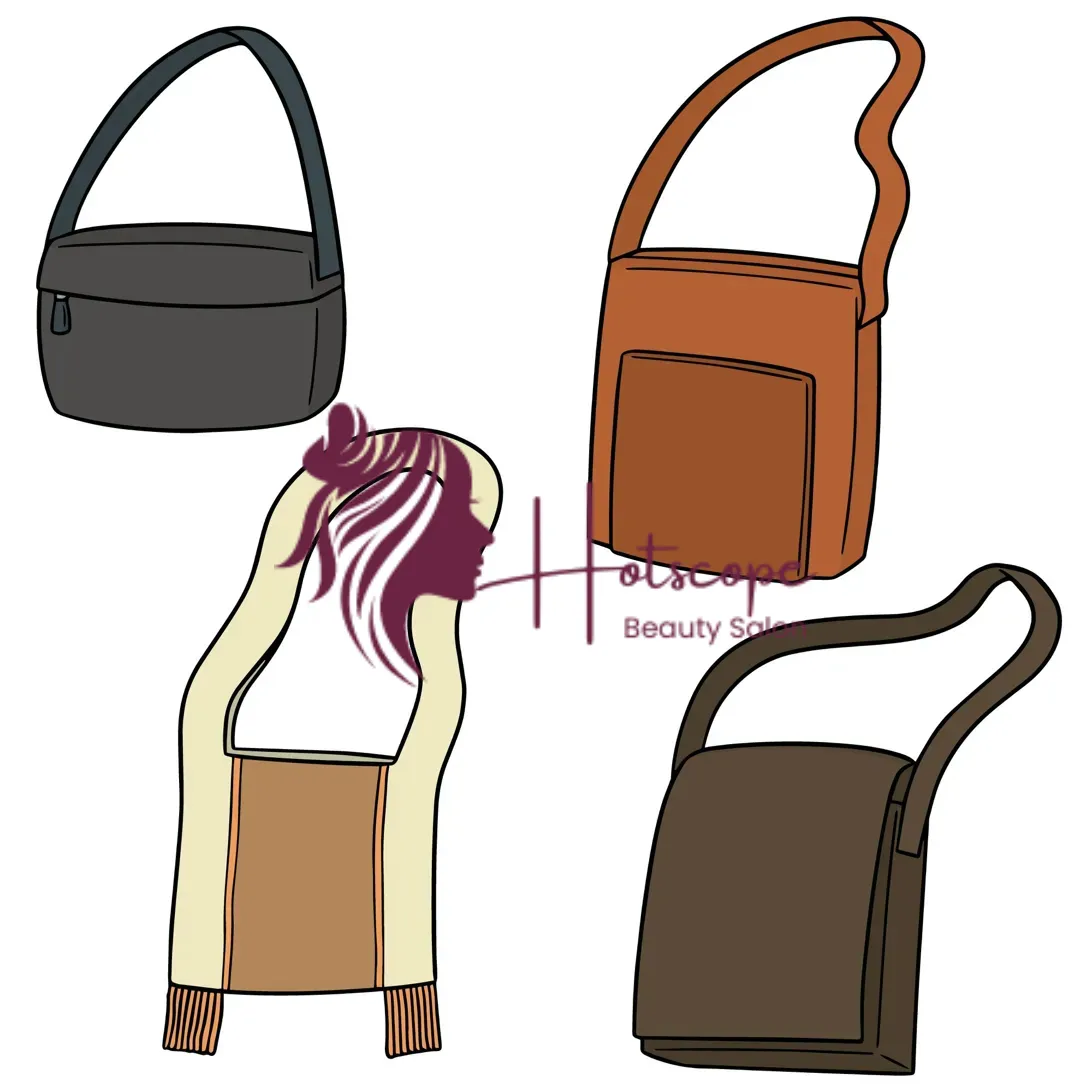When it comes to putting together a signature look, few accessories offer as much practical utility combined with style as branded handbags for women. These bags are more than just containers for essentials—they often serve as reflections of personality, craftsmanship, and lifestyle. Whether you’re commuting, travelling, or attending an event, the right handbag can elevate your outfit, protect your belongings, and even carry sentimental value. Because of this, understanding how to choose one wisely can make a big difference in long-term satisfaction.
One of the most versatile formats in this realm is the womens sling bag. Lightweight and often compact, sling bags can be worn cross-body or over the shoulder, giving both convenience and style. They offer enough space for daily necessities like wallets, phones, keys, maybe even a small water bottle, without being bulky. And for many women, they represent the perfect fusion of fashion and function—freeing up both hands while keeping essentials close. In this blog, we’ll explore the history, materials, styles, usage tips, and care advice for branded handbags and sling bags so that you can make informed decisions more than just following trends.
A Brief History: From Utility to Fashion Statement
Handbags—and by extension sling bags—have come a long way. Originally, bags were simple pouches or purses used largely for carrying money or small items. As societies developed, so did materials, styles, and society’s views of accessories. In the early 20th century, bags started to become symbols of wealth and status. Famous designers introduced aesthetic elements—branding, signature hardware, unique shapes—that transformed bags into coveted items.
Sling bags first gained prominence as practical accessories, especially for active women, travellers, and those needing hands-free carry. Over time, designers began incorporating fashionable elements—patterns, textures, colour blocking, hardware—and they became part of everyday and special-occasion wardrobes alike.
Materials & Craftsmanship: What to Look For
When selecting a high-quality handbag or sling bag, pay attention to:
- Leather types – Full-grain leather is durable and develops a pleasing patina; top-grain is a step down (sanded or polished), but still good; genuine leather is lower quality; synthetic leathers (PU, vegan) vary widely. Check the feel, stitch quality, lining.
- Hardware and fixtures – Zippers, clasps, buckles should be sturdy, well-finished, without sharp edges. Plating should be even and resistant to tarnish.
- Stitching – Straight, tight, and even stitches indicate careful workmanship. Look inside the bag and at stress points (corners, handles) for reinforcement.
- Lining and interiors – Fabric or leather lining should be smooth, well stitched, and perhaps have pockets for smaller items. A well‐organized interior enhances usability.
- Branding details – Subtle versus overt logos; embossing; signature motifs. These can affect both aesthetics and resale value.
Types of Bags & Styles to Know
To choose the right bag for your needs, it helps to know the common categories:
- Totes & Shoppers: Large, open-top bags with sturdy handles; great for work or shopping.
- Satchels & Hobos: Satchels have structured shapes; hobos are more slouchy.
- Shoulder Bags: Designed to hang off the shoulder; size and strap width vary.
- Clutches: Small, often without handles or straps; ideal for evenings.
- Crossbody / Sling Bags: Designed for wearing across the body or over one shoulder; these offer hands-free mobility and are often lighter.
Within sling or crossbody styles, you’ll find mini versions (just cellphone & wallet), medium sizes that include small tablets or planners, and even adjustable strap variants for flexibility.
Choosing What Fits Your Lifestyle
Your daily habits, routines, and priorities should guide your choice more than trends. Consider:
- What you carry daily – If you mostly carry small essentials (phone, keys, wallet), even a compact sling bag will do. If you commute, travel, or carry more items (water bottle, makeup, charger), you might prefer a small tote or a larger handbag.
- Versatility – Neutral shades, removable straps, hardware that matches many outfits give more styling options. Convertible designs (e.g. strap can be detached or reconfigured) are increasingly popular.
- Comfort – Strap weight, handle grip, overall weight of bag matters. A heavy bag becomes bothersome. If using a sling bag, check strap width and how it sits on the shoulder or chest.
- Occasion and aesthetic – For formal events or evenings, sleek clutches or structured handbags in polished materials may work. For casual outings, everyday sling bags or soft totes in durable fabrics are more practical.
Caring for Your Handbags & Sling Bags
Maintaining longevity requires a little effort:
- Cleaning – For leather, use a gentle cleaner and conditioner. For fabric, mild soap and water, air-drying. Always check manufacturer recommendations.
- Storage – Use dust bags or pillowcases; keep shape by gently stuffing with tissue paper, avoid folding or crushing. Store in a cool, dry place away from direct sunlight.
- Avoiding moisture and stains – Waterproof sprays help (on some materials). Wipe off spills quickly. Be mindful of colour transfer (e.g., from denim onto light bags).
- Hardware care – Wipe hardware gently to avoid tarnish; avoid exposure to harsh chemicals (perfumes, hairspray) which can degrade metal finishes.
Making Sustainable & Ethical Choices
Lately, many consumers want their accessories to align with ethical and environmental values. Some factors to consider:
- Source of materials – Vegan leathers, recycled fabrics, or leathers certified by sustainability bodies.
- Manufacturing practices – Whether the brand ensures fair labour, low waste, responsible sourcing.
- Longevity over fast fashion – Buying fewer, better quality bags that you’ll keep and use for years tends to be more sustainable than owning many low-quality ones.
- Resale and recycle value – Some branded bags retain value; others can be donated or recycled.
Current Trends in Handbags & Sling Bags
Where fashion is heading (or continuing) with bags:
- Mini bags – Tiny crossbody or sling styles that carry minimal essentials.
- Bold hardware and logos – Oversized buckles, chains, or logos as visual statements.
- Colour & texture – Pastels, metallics, mixed materials (e.g. leather + fabric or canvas), croc or reptile embossing.
- Convertible multi-way designs – Bags that can shift between shoulder, crossbody, or clutch.
- Tech-friendly features – Compartments for phones, cables; even pockets with RFID protection.
Final Tips Before You Buy
- Try before you buy, if possible: test how a bag feels loaded with what you carry routinely.
- Think long term: neutral colours and classic shapes age more gracefully.
- Budget wisely: a well-made mid-range bag often beats a cheaply made designer replica in durability.
- Check warranty/repair services: good brands often provide hardware repair or replacement.
- Read reviews: real user feedback reveals how bags perform over months or years.
Conclusion
Whether it’s a stately handbag that carries essentials and makes a style statement, or a sleek womens sling bag that offers hands-free ease, understanding materials, design, usage, and care helps you make informed choices. Branded handbags for women bring more than just a logo—they deliver craftsmanship, thoughtful design, and longevity. If you invest wisely, your chosen accessory will serve you well in many settings—urban commutes, weekend getaways, or special occasions—combining function and form in ways that go beyond mere trends.

